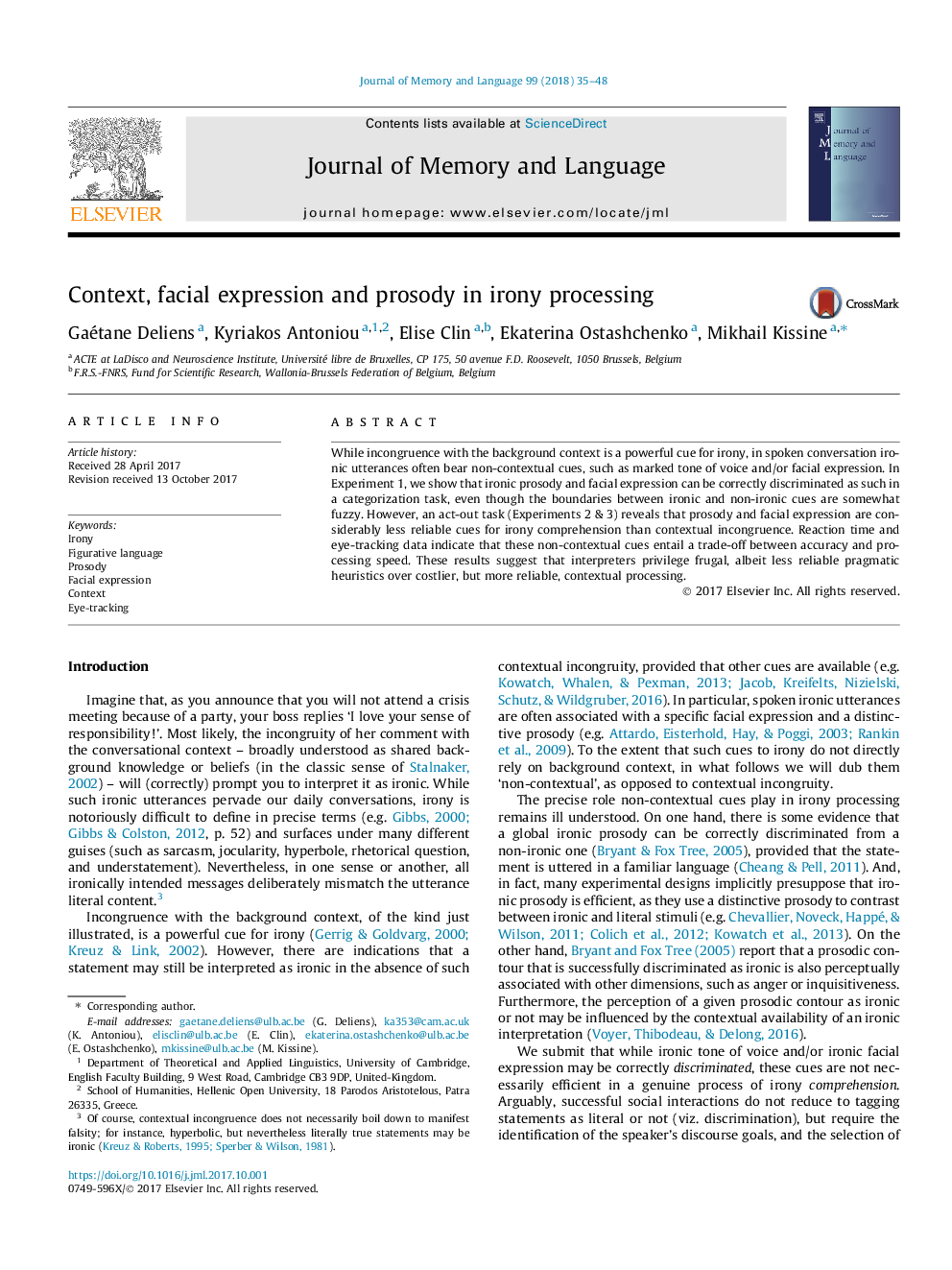| Article ID | Journal | Published Year | Pages | File Type |
|---|---|---|---|---|
| 7296836 | Journal of Memory and Language | 2018 | 14 Pages |
Abstract
While incongruence with the background context is a powerful cue for irony, in spoken conversation ironic utterances often bear non-contextual cues, such as marked tone of voice and/or facial expression. In Experiment 1, we show that ironic prosody and facial expression can be correctly discriminated as such in a categorization task, even though the boundaries between ironic and non-ironic cues are somewhat fuzzy. However, an act-out task (Experiments 2 & 3) reveals that prosody and facial expression are considerably less reliable cues for irony comprehension than contextual incongruence. Reaction time and eye-tracking data indicate that these non-contextual cues entail a trade-off between accuracy and processing speed. These results suggest that interpreters privilege frugal, albeit less reliable pragmatic heuristics over costlier, but more reliable, contextual processing.
Related Topics
Life Sciences
Neuroscience
Cognitive Neuroscience
Authors
Gaétane Deliens, Kyriakos Antoniou, Elise Clin, Ekaterina Ostashchenko, Mikhail Kissine,
